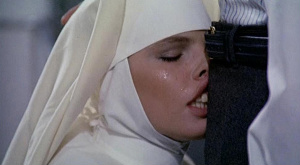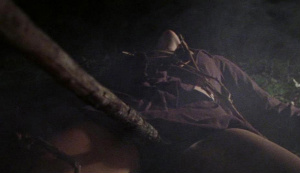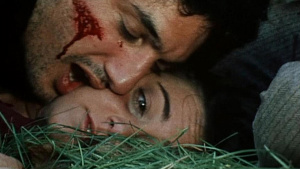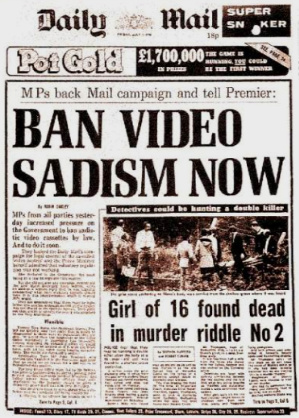
2009 marks the twenty-fifth anniversary since artistic freedom almost became extinct in the UK. The ‘video nasty’ witch-hunt, which saw moral watchdogs, tabloid newspapers and the police joining hand-in-hand on their clampdown against immortal and sick filth, would result in countless movies being outlawed for the next decade. The Video Recordings Act 1984, which eventually came into effect on September 1 1985, forced all distributors and filmmakers to submit their products for classification before being released onto home video. As the government and the Advertising Standards Agency went into a frenzy over the possibility that children would be able to view such atrocities as Cannibal Holocaust or Faces of Death, a list of main offenders was drafted by the Director of Public Prosecutions (DPP) and those selected were removed from the shelves and refused a release.
The introduction of VHS and Betamax should have been cause for celebration, allowing viewers to watch movies in the comfort of their home whenever they desired. But the seventies had marked a drastic change in cinema, with many filmmakers taking the violence and sexuality within their work to the extreme. The genre was awash with images of disembowelment and cannibalism, whilst the rape/revenge film became commonplace following the success of Straw Dogs and The Last House on the Left. Some filmmakers, often Italian, would even invite controversy with some truly repugnant features produced during this era. Even the titles of some of these were enough to anger the censors. Thus, the likes of SS Experiment Camp and Killer Nun, films which otherwise would most likely have faded into obscurity, would become a target for the government.

There were two films in particular which would become synonymous with the ‘video nasty.’ The first, and most reviled, was Sam Raimi’s low budget debut The Evil Dead, which would boast a scene in which one of the principal characters, a young woman, was raped by a tree. Despite later being cut from VHS releases, this sequence in particular succeeded in attracting the attention of the censors. When a full page poster of a man’s head being drilled for Abel Ferrara’s low budget art house slasher The Driller Killer was published by VIPCO, angry protests from parents resulted in the Advertising Standards Agency becoming aware of the growing trend of sick and perverted movies that were being produced.
One of the most instrumental in the fight against the video nasties was Mary Whitehouse, a moral decency spokeswoman who had launched a Clean Up TV campaign in the sixties and, disgusted after receiving an anonymous letter protesting against the barbaric nature of Cannibal Holocaust (which, it was later revealed, had actually been sent by its distributor), led the National Viewers’ and Listeners’ Association in a fight against the new breed of pornography and smut that was being passed off as entertainment. It would be Whitehouse who would coin the term ‘video nasty,’ which would prompt the tabloids to follow suit and spark a nationwide panic, fuelled even further by an article printed in May 1982 in The Daily Mail entitled ‘How high street horror is invading the home.’

Their main target were slasher films and Italian exploitation, most notably zombie and cannibal flicks. There were several directors whose work was constantly singled out, including Joe D’Amato, Umberto Lenzi, Ruggero Deodato and, most notoriously, Lucio Fulci. The latter would appear on the DPP list three times, whilst all copies of his 1982 giallo Lo squartatore di New York (The New York Ripper) would be ordered out of the country. Slashers were another frequent cause for debate, resulting in several making their way onto the list after the controversy surrounding The Texas Chainsaw Massacre a few years earlier. Amongst those singled out were The Dorm That Dripped Blood (under the alias Pranks), The Funhouse, Visiting Hours, Night School (aka Terror Eyes) and The Burning.
Overall, there would be seventy-four films that at one time or another would make their way onto the video nasty list, some appearing more than once. The courts successfully managed to prosecute an astonishing thirty-nine films in total, although many of them would later be released uncut on DVD. Some, such as Fight for Your Life and La Maldicion de la Bestia (The Werewolf and the Yeti), are still unavailable in Britain. One prosecution saw the distributor of Romano Scavolini’s Nightmare (renamed Nightmare in a Damaged Brain) jailed for eighteen months after releasing a version of the film that was one minute longer than the cut approved by the BBFC, although he would only serve six.

One famous incident in which the witch-hunt would reach ridiculous extremes was during a seize in Manchester when police confiscated a copy of The Best Little Whorehouse in Texas, which was not an adult film as they had believed but was in fact a Dolly Parton/Burt Reynolds musical. Capitalising on the fear that these films had caused, tabloids such as The Daily Mail ran several front page stories declaring that these sick and demented movies were corrupting the young. By the end of the decade the term ‘video nasty’ was no longer used, though most of those that had been featured on the list would remain banned in the UK until after the resignation of BBFC director James Ferman in 1999. Twenty-five years on and many of these films are still unavailable uncut!


8 Responses to VIDEO NASTY DATABASE vol. 1